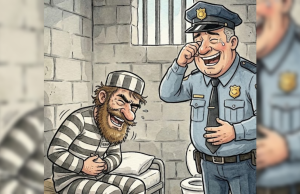Even if you are young, never ignore the following wαrning signs of a stroke

Strokes are among the leading causes of d.eath and disability worldwide and a major cause of severe, lifelong disability. Learning the warning signs of a stroke is essential to minimizing the consequences of this potentially lif.e-threatening event.
A stroke, also known as a brain attack, occurs when blood flow to the brain stops, and the brain cells in the area begin to die. A stroke can affect the entire body. Acting fast can make a big difference for someone who’s having a stroke.
Similar to many other chronic illnesses, the risk of getting a stroke increases as you age.
The American Stroke Association has said that every 10 years after age 55, one’s risk of stroke nearly doubles.
Warning signs of stroke
A pre-stroke or a transient ischemic attack (TIA) takes place when the blood supply to the brain briefly stops and resumes. The way it manifests may seem similar to stroke, however, it disappears within 24 hours without causing much damage. According to reports, 1 in 3 people who have a pre-stroke will eventually have a stroke, which is why it is incredibly important to take note of any sign linking itself to a brain attack or major stroke. That said, here are some warning signs to spot stroke risks early.
– Weakness/numbness in the face, arms, or legs
– Double vision in one or both eyes
– Vertigo
– Slurred speech
– Difficulty in understanding others
– Loss of balance
FAST test
Experts from the National Stroke Association and American Heart Association use the acronym FAST to spot the early signs of a stroke. Many other public health officials also use it to recognize the symptoms of a stroke. That said, FAST means:
– Facial drooping
– Arm weakness
– Speech difficulties
– Time
It is important that you seek medical help as and when you notice these signs.
Types of stroke
There are two types of stroke namely Ischemic stroke and Hemorrhagic stroke.
Ischemic strokes occur when blood clots or other particles block or narrow down the arteries leading to the brain.
Hemorrhagic stroke is when blood from an artery suddenly starts to bleed into the brain, which is why the damaged part of the brain cannot function properly.
There is also something called a transient ischemic attack (TIA) a.k.a mini stroke. It is different from other types of stroke given that the blood supply to the brain is blocked only for a short span of time, without any harm done.


















